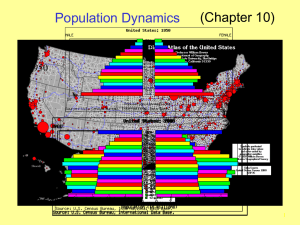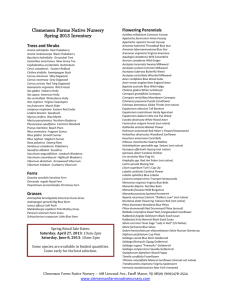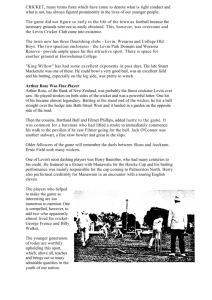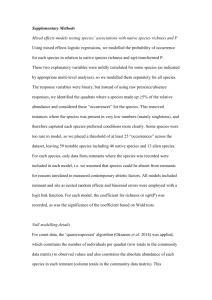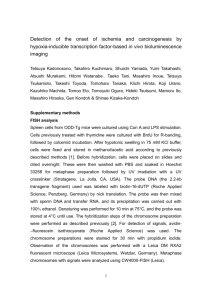Principles of Life
advertisement
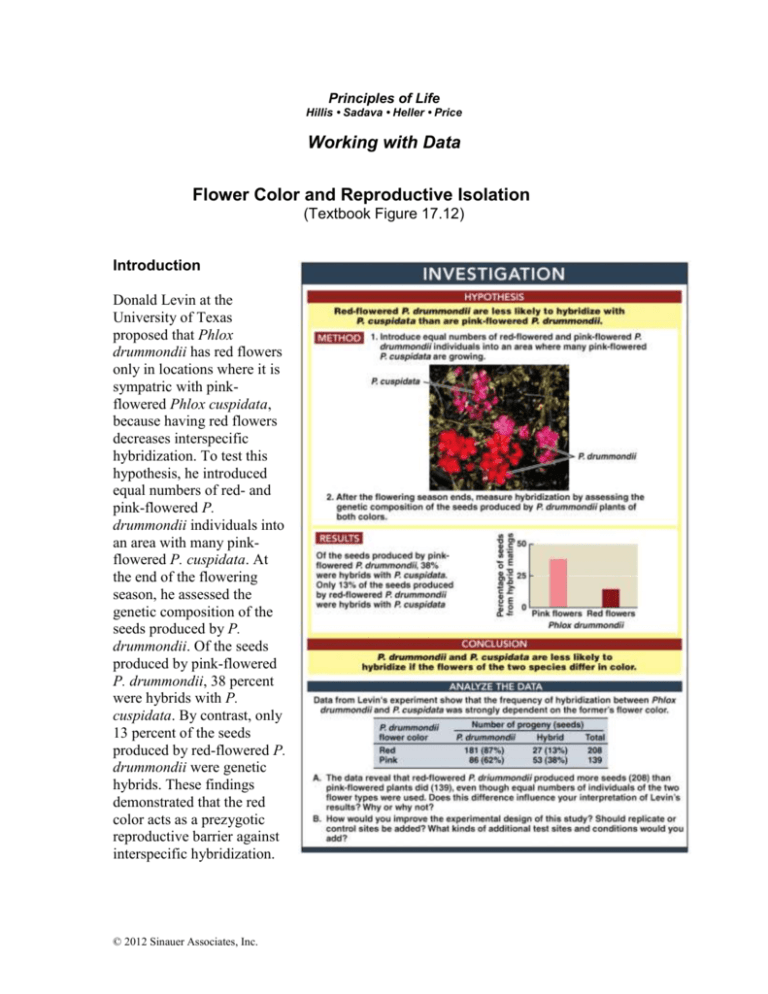
Principles of Life Hillis • Sadava • Heller • Price Working with Data Flower Color and Reproductive Isolation (Textbook Figure 17.12) Introduction Donald Levin at the University of Texas proposed that Phlox drummondii has red flowers only in locations where it is sympatric with pinkflowered Phlox cuspidata, because having red flowers decreases interspecific hybridization. To test this hypothesis, he introduced equal numbers of red- and pink-flowered P. drummondii individuals into an area with many pinkflowered P. cuspidata. At the end of the flowering season, he assessed the genetic composition of the seeds produced by P. drummondii. Of the seeds produced by pink-flowered P. drummondii, 38 percent were hybrids with P. cuspidata. By contrast, only 13 percent of the seeds produced by red-flowered P. drummondii were genetic hybrids. These findings demonstrated that the red color acts as a prezygotic reproductive barrier against interspecific hybridization. © 2012 Sinauer Associates, Inc. Sexual isolating mechanisms such as the one described above are typically considered to be the most important genetic barriers leading to speciation. With regard to Phlox plants, the presence of a color signal increases the likelihood of receiving intraspecific pollen. Given that the Phlox hybrids that occur in sympatry produce almost no viable seeds, it is clear that reproductive advantages exist for individual Phlox plants that donate and receive primarily intraspecific pollen. Original Paper Levin, D. A. 1985. Reproductive character displacement in Phlox. Evolution 39: 1275– 1281. http://www.jstor.org/pss/2408784 Links (For additional links on this topic, refer to the Chapter 17 Investigation Links.) University of Texas: Phlox drummondii http://www.sbs.utexas.edu/bio406d/images/pics/plm/phlox_drummondii.htm University of Texas: Phlox cuspidata http://www.sbs.utexas.edu/bio406d/images/pics/plm/phlox_cuspidata.htm University of Texas: Donald Levin’s Home Page http://www.biosci.utexas.edu/IB/faculty/levin.htm Analyze the Data Phlox drummondii and P. cuspidata are annual plants that are sympatric over parts of their respective ranges in Texas. They often grow within a few meters of each other. The two species are fully cross-compatible. Hybrids are common in nature and grow vigorously, but they rarely set seed. P. drummondii is almost exclusively outcrossing, whereas P. cuspidata is predominantly self-fertilizing. The plants are pollinated by a suite of lepidopterans (butterflies and moths), some of which pollinate both species. In a previous experiment, Levin and Watkins established replicated field plots, each containing 24 P. drummondii plants of each flower color type that were similar in size and number of flowers. They watched 300 visits by pollinators to the plants. Both types of plants were visited with equal frequency, but individual pollinators tended to visit plants of only one color during a visit. Only 37 percent of the 780 progeny they scored came from hybrid pollinations. The expected frequency if mating had been random was 50 percent. These results raised the possibility that the red corollas in areas of sympatry of the two species were favored by natural selection because the trait reduced interspecific © 2012 Sinauer Associates, Inc. pollination and hybridization. If so, the red morph should produce a lower proportion of hybrid seed than the pink morph when both are growing together with P. cuspidata. In addition, because hybrid individuals survive and reproduce poorly, populations of P. drummondii that are sympatric with populations of P. cuspidata should have stronger cross-incompatibility barriers than allopatric populations. The experiment described above was performed to test these predictions. Twenty plants of each color morph were grown in pots in a greenhouse. When the plants were in full flower, they were placed in the study area in a checkerboard pattern—a 4 10 rectangular array of plants with 5 meters between plants in rows and 5 meters between rows. After three weeks in the field, the plants were returned to the greenhouse, where the mature seeds were collected and their genotypes assessed. Question 1 (from textbook Figure 17.12) Data from Levin’s experiment show that the frequency of hybridization between Phlox drummondii and P. cuspidata was strongly dependent on the former’s flower color. A. The data reveal that red-flowered P. drummondii produced more seeds (208) than pink-flowered plants did (139), even though equal numbers of individuals of the two flower types were used. Does this difference influence your interpretation of Levin’s results? Why or why not? B. How would you improve the experimental design of this study? Should replicate or control sites be added? What kinds of additional test sites and conditions would you add? Question 2 Shifts in the expression of characters, such as the color differences in P. drummondii, may be the result of three different processes: (1) selection on one character that reinforces previously existing reproductive barriers; (2) selection on one character and correlated responses in other characters; and (3) selection on one or more characters that having nothing to do with the presence of the congener. Donald Levin argues that the experimental results show that the first process explains the evolution of red-flowered Phlox. That is, he claims that the red-flowered morph was favored because those individuals have a reduced probability of hybridization with P. cuspidata in the zone of sympatry. In support of his argument, he offers the following evidence: (a) The red-flowered P. drummondii is the only red-flowered member of the species-rich Phlox genus. Therefore, red flowers are almost certainly a derived character. © 2012 Sinauer Associates, Inc. (b) A similar pattern exists in an area of sympatry between Phlox pilosa and P. glaberrima. Both species typically have pink flowers but white-flowered P. pilosa dominate in the area of sympatry. (c) P. drummondii have a higher level of self-compatibility in populations that are sympatric with P. cuspidata. (d) Hybridization with P. cuspidata substantially suppresses seed production in P. drummondii. (e) Pollinators tended to go to plants of only one color during their visits to the experimental patch. Are you convinced by his argument? Which of the types of evidence he offers do you judge to be the most important for deciding among alternative explanations? © 2012 Sinauer Associates, Inc.
